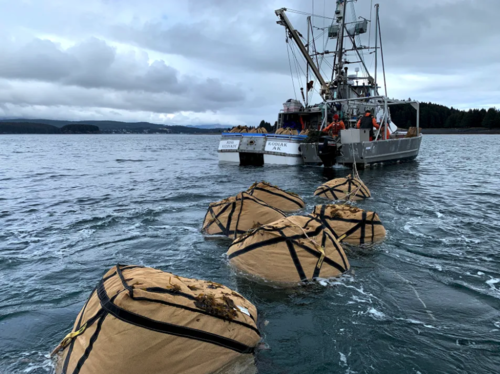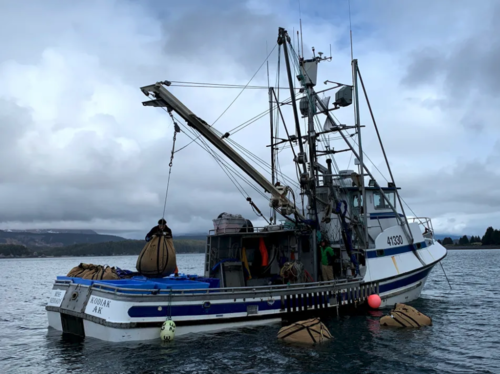Kelp Harvest Innovation in Kodiak, Alaska
On the island of Kodiak, 250 miles south of Anchorage in southcentral Alaska, kelp farming has taken root.
Kodiak has long been an active commercial fishing port, with seafood processors lining the waterfront, ready to receive, process and ship seafood harvested from regional waters by the local fleet. This existing infrastructure has been critical in the development of the kelp farming industry there.
Kodiak Island is the ancestral home of the Alutiiq people, and there are six remote Native villages on the Kodiak archipelago today. Native peoples have depended on the natural abundance of the region for thousands of years, harvesting salmon, seabirds, and marine mammals that live in the nearby waters. Today, much of the island is a designated National Wildlife Refuge.
The wet, maritime climate with nutrient-rich waters and sheltered coves creates conditions ideal for growing kelp. The island’s many beaches are lined with seaweeds that float up on the incoming tide and showcase the rich marine ecosystem of the region.
Just a mile from the mouth of the main harbor, two 17-acre kelp farms are in operation owned by Alf Pryor and Nick Mangini, two local fishermen. From the surface, the farms are a patchwork of orange buoys. But below the water hangs over 300,000 lbs of sugar and ribbon kelp growing for commercial harvest.
In May, the crew begins the weeks-long process of harvesting the kelp. Alf Pryor, of Dead Humpy Farms, retrofit a setnet skiff originally used for harvesting salmon to be custom-designed for this process.
The crew accesses the kelp, which is grown on horizontal growlines several feet below the surface, by detaching the growline from the supporting matrix of lines and bringing it aboard over a roller in the bow.
Then the growline is routed to the stern over a block system that elevates the line and helps strip the holdfasts. The line is reeled in with a hydraulic line hauler in the stern, and coiled by the winch operator. Meanwhile, Alf slices the kelp into suspended brailer bags (a tough, canvas-like material used for hauling salmon) as it passes overhead.
When the bags are full, they’re tied shut, and an electric winch is used to lift a hinged platform below the bag to tumble it off the deck and into the water. From there, the bags are towed behind the skiff as it continues down the line harvesting more kelp. With this setup the farmers are able to tow up to 7 bags, each containing several hundred pounds of kelp, dramatically improving the efficiency of the harvesting process. In the past, kelp was loaded into totes full of seawater on the deck of the boat. The weight caused for slow going and frequent trips to the processor. With the brailer bag adaptation, the crew is able to harvest 6,000 lbs, a day’s worth of kelp for the processor, in just a few hours.
Brailer bags are sometimes staged attached to an anchor point on the farm, and left floating while the skiff works to harvest additional growlines.
When the crew is ready to deliver, they tow their brailer bags full of kelp to a tender anchored nearby.
The tender uses a boom to lift the bags of kelp and place them in totes. They come to collect the kelp once a day and transport it to the nearby processor.
After a quick run to shore, the tender docks alongside the processing facility.
The totes of kelp are lifted from the tender by a crane and stacked on the dock outside the processing facility.
Blue Evolution, the company buying and processing the raw kelp, works in partnership with Kodiak Island Wild Source, a local seafood processing company, to utilize their idle facility in the quiet weeks before the start of the salmon season.
During the first stages of processing, the raw kelp is sorted and diced into smaller pieces by the crew.
From there, it is portioned into plastic baskets and washed with fresh water to remove any biofouling or debris.
Next, it passes down a long conveyor belt where it is inspected by a quality control team, blanched, and finally deposited at a collection point for packaging.
Blue Evolution kelp is sold in frozen whole leaf packages or as a minced purée. The freshly blanched kelp is packaged in one of these two ways, and frozen in a nearby blast freezer. The kelp will eventually be shipped in fully frozen shipping containers to the Lower 48 for further processing and distribution.
Meanwhile, the crew heads back out to the farm to tend to their lines and prepare for another day of harvest. They’ll be back in the morning to do it all over again.




























